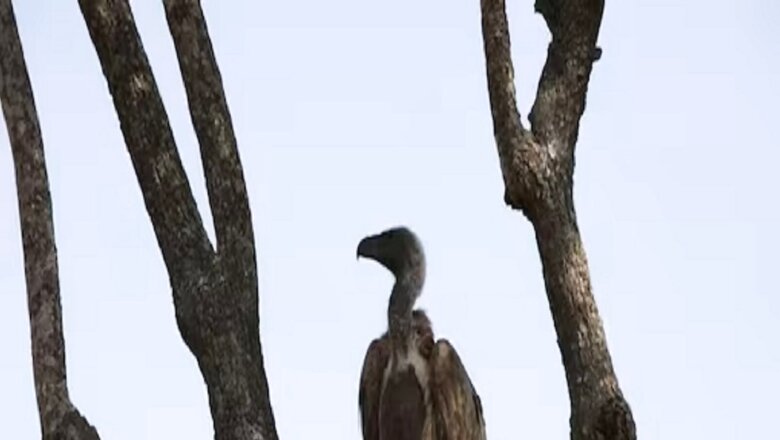
views
A missing critically endangered white-rumped vulture, being used by Nepal to monitor the population of the species and the success of a breeding drive, has been rescued in Darbhanga in Bihar earlier this month, officials here said.
The male vulture with a satellite tag had gone off the radar since April and was last sighted in Tanahun district of Nepal in September, ten months after it was set free into the wild this year by the Nepalese authorities.
Its disappearance had been a matter of concern for the wildlife officials of Nepal till it was caught by the Bhagalpur bird ringing station personnel when the bird was sitting in a field at Benipur in Darbhanga in a weak and hungry condition on November 13, the officials said.
The white rumped vulture (Gyps Bengalensis) has been listed as critically endangered on the IUCN Red List since 2000 as its population declined rapidly primarily as a result of feeding on carcasses of animals treated with the veterinary drug diclofenac, Bihar Chief Wildlife Warden P K Gupta said.
The species was very common on the Indian subcontinent, besides Myanmar, Thailand, Laos, Cambodia, and southern Vietnam and were found near human habitation. The white-rumped vulture feeds mostly on the ground, but roosts and nests in trees and cliffs and spends much of its time soaring on wind currents searching for carrion. Their nests are typically two to 18 meters above the ground.
The bird is medium-sized and dark with blackish plumage, a white neck-ruff, and a white patch of feathers on the lower back and upper tail, from which the name was derived. The adult birds are darker than the juveniles.
An adult white-rumped vulture is 75 to 85 cm tall with a wing span of 180 to 210 cm and weight ranging from 3.5 to 7.5 kg. The male and the female birds are approximately equal in size.
“Released with ecotone satellite tag #4857637306-NEPA13 with aluminum purple leg ring #N 15 for research and monitoring of the vulture safe zone by Nepalese authorities, it is now in safe hands,” Gupta, told PTI.
The news of finding it was shared with the Jatayu Conservation Breeding Centre in Pinjore (Haryana), the Bombay Natural History Society (BNHS) and the Royal Society for the Protection of Birds(RSHB) at Sandy (England) were immediately alerted, he said.
The vulture has now been kept in Darbhanga under the overall observation of Bird Ringing and Monitoring Station, Bhagalpur and will be released after a few days, he said.
Gupta said that after the rescue it was found that the bird was weak because he was hungry. It was immediately provided with food and other required items and is now normal.
”The vulture was medically examined too. The Nepalese authorities have appreciated our efforts and also shared details about his movements,” he said.
The vulture after his release in November 2021 had travelled to Sohagi Baruwa Wildlife Sanctuary, Maharajganj (Uttar Pradesh) – about 55 km away on February 9, 2022 with regular data transmission. Later, the bird travelled back to Nepal, almost 96 km, to Abukhaireni (Tanahu) and did not transmit data since April 2022. It was last sighted on September 3, 2022 around Tanahu and was not sighted since then this, Gupta said quoting the message from the Nepalese authorities.
Bihar has become the fourth state in the country to have a bird ringing (tagging) station. Rings are placed on the legs of the birds to study their migration pattern, mortality, territoriality and other behaviour with the help of encrypted codes embedded in the attached tracking device, he said.
The Bhagalpur bird ringing station had earlier saved a Mongolian Pallas’s fish eagle, named Anna, in October 2021.
“This eagle had started migration from a bird sactuar in Mangolia on September 21, 2021 and came through Bangladesh and entered India on October 10, 2021. It was finally spotted in Bihar,” Gupta said.
Read all the Latest India News here


















Comments
0 comment